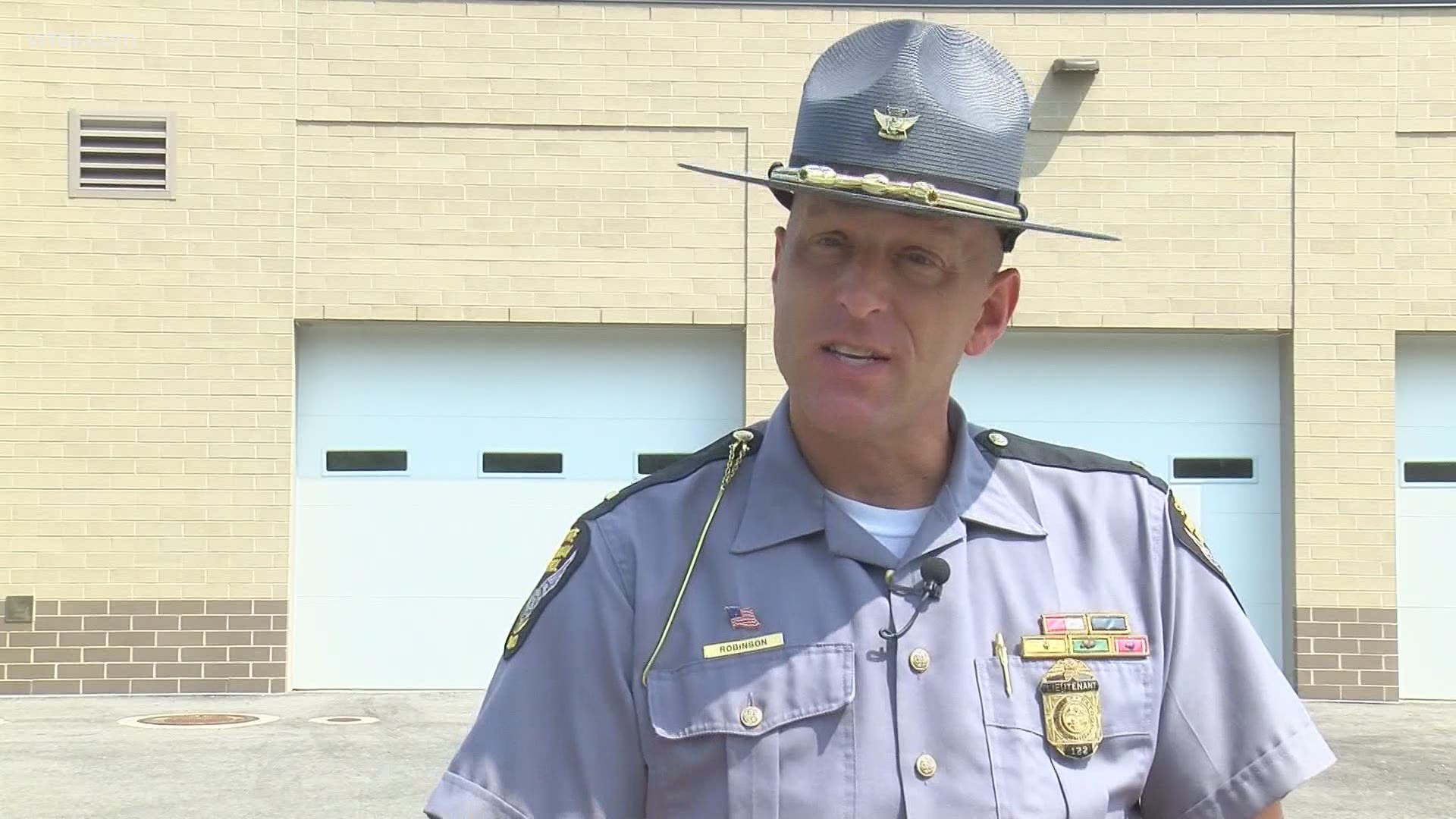COLUMBUS, Ohio — Editor's Note: The above video features previous coverage of OSHP enforcing "Move Over" from our sister station WTOL.
The Ohio State Highway Patrol, along with the state trooper forces of Michigan, Kentucky, West Virginia, Pennsylvania and Indiana, are taking part in an enforcement initiative aimed at delivering drivers a simple message: Move Over.
The cooperating police forces, dubbed the 6-State Trooper Project, will focus efforts on a week-long period of “high-visibility enforcement” to ensure that drivers move to an adjacent lane when approaching roadside vehicles with flashing or rotating lights, the OSHP announced Friday in a news release.
The enforcement initiative will begin on Sunday, July 17 at 12:01 a.m. and run until July 23 at 11:59 p.m.
“Moving over protects the lives of everyone who works or uses our roadways,” said OSHP Superintendent Colonel Richard S. Fambro. “Moving over isn’t just the law, it’s the right thing to do.”
Ohio, like all 50 states, has a Move Over law requiring all drivers to move over when approaching stopped patrol cars, emergency vehicles, service or utility vehicles or any other vehicle operating flashing warning lights while parked on the roadside. If moving over is not possible for reasons including weather and traffic conditions or if the roadway only has one lane, drivers are instructed to slow down and proceed with caution.
The OSHP said that from 2017 to 2021, 51 of its patrol cars were sideswiped, rear-ended or hit at an angle in crashes related to Move Over law violations, resulting in the deaths of two civilians and 41 injuries. Over that four-year span, 26,258 Move Over citations were issued.
Of the 51 crashes, nearly 60 percent took place on dark, unlit roads and 57 percent involved wet roads or roads covered in ice, snow or slush, according to OSHP.
Over the four-year span, the five Ohio counties representing the highest offenders of Move Over violations were Franklin, Erie, Mahoning, Stark and Cuyahoga counties. Those five counties accounted for one in four citations.
Males were issued 60 percent of the total citations, and 36 percent were issued during summer months.

